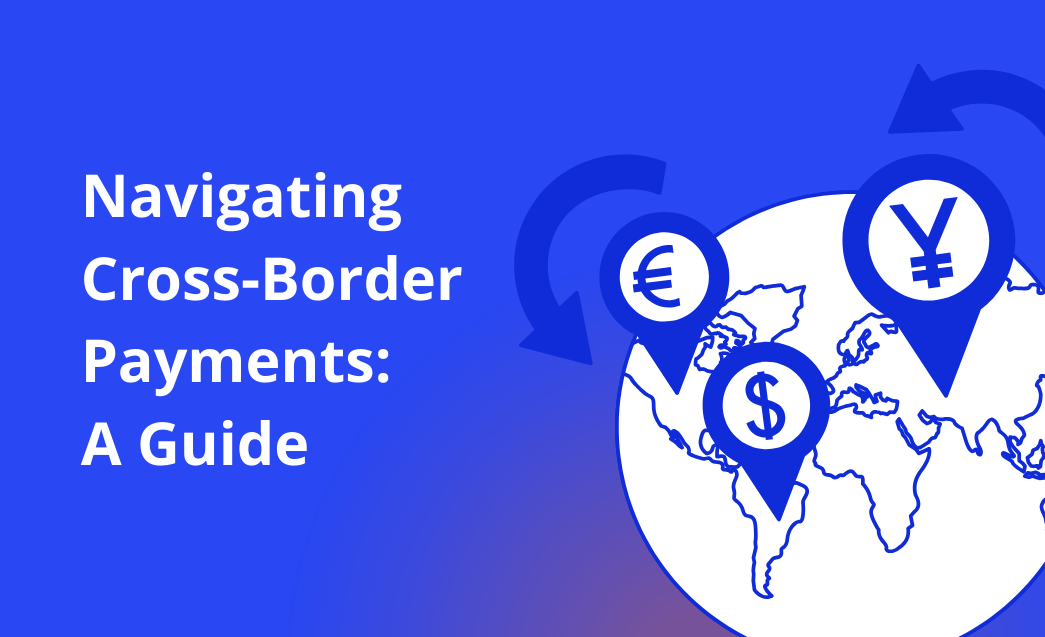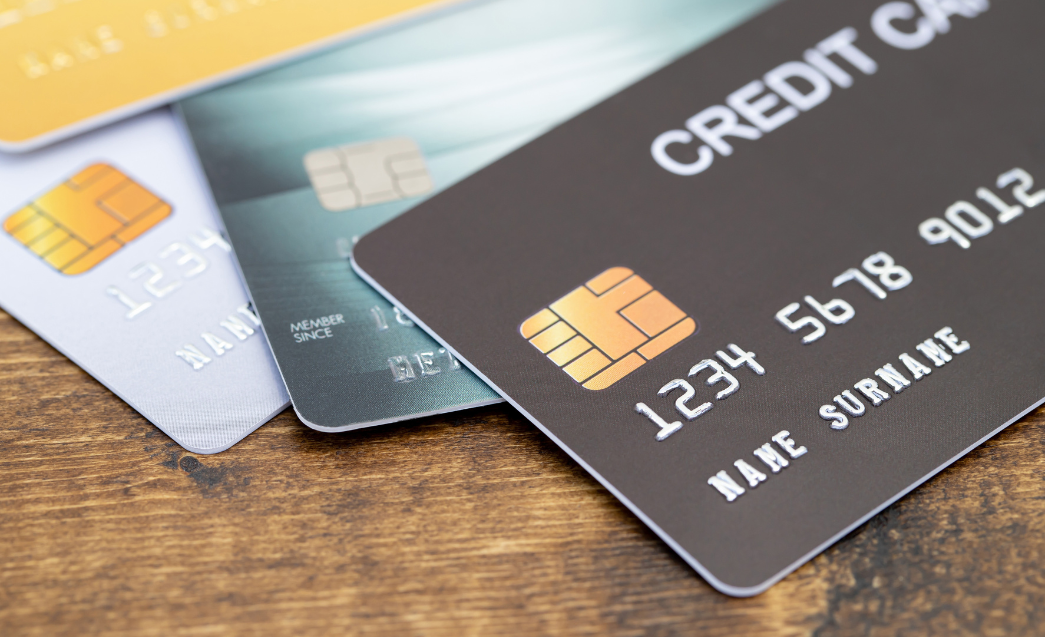Navigating Cross-Border Payments: A Guide
Examine the options available for B2B cross-border payments today and explore a cutting-edge solution for your international transactions. Gain a leg up in the realm of digital payments today.

Cross-border payments are vital for facilitating international trade, investment, and financial transactions and in aggregate the size of these flows is massive. Total cross-border payments exceeded $190 trillion in 2023, according to Statista. And the rapid development of international e-commerce in an increasingly global marketplace has accelerated the growth in cross-border payments over the past decade.
Despite this growth, traditional cross-border payment systems have long been hampered by high costs, lengthy processing times and a lack of transparency. Fortunately, advancements in technology, particularly in the realm of fintech, are revolutionizing cross-border payments. Today, new options exist that offer lower prices, greater speed, and increased transparency than ever before. This not only greases the wheels of international commerce but opens the possibility of international trade for small and medium size businesses that might not have been able to manage the complexities of cross-border commerce with traditional solutions.
What is a cross-border payment?
A cross-border payment refers to any transaction in which the payer and the payee are located in different countries. B2B cross-border payments refer to financial transactions that involve the transfer of funds between businesses across different countries. These transactions include but are not limited to trade payments, foreign investments, and multinational corporate operations.
Historically, cross-border payments have faced significant challenges due to the reliance on a network of correspondent banks acting as intermediaries. Each intermediary bank along the payment route introduces delays, fees, and potential points of failure, resulting in slower processing times and higher costs for both senders and recipients.

Moreover, the lack of standardization and interoperability between different banking systems and currencies complicates cross-border payments, often leading to errors, discrepancies, and regulatory compliance issues. These inefficiencies hinder the competitiveness of businesses operating globally.
However, the emergence of innovative technologies is reshaping the landscape of cross-border payments, offering promising solutions to address these longstanding challenges. Fintech innovations such as digital wallets and application programming interfaces (APIs) are playing a crucial role in transforming cross-border payment processes.
Fintech innovation is changing cross-border payments
Digital wallets and mobile payment apps enable users to store, send, and receive funds across borders seamlessly using their smartphones or other internet-enabled devices. These platforms leverage the ubiquity of mobile technology to provide convenient and cost-effective solutions for cross-border transactions.
APIs facilitate integration between different payment platforms and financial institutions, enabling faster and more efficient cross-border transactions. By leveraging APIs, businesses can access a wide range of financial services, including currency conversion, compliance checks, and more, without the need for complex integrations or manual processes.
Despite these advancements, challenges remain in achieving widespread adoption and interoperability of digital payment solutions for cross-border transactions. Concerns around data privacy, cybersecurity, regulatory compliance, and cross-border regulatory differences continue to pose barriers to the seamless integration of digital payment systems on a global scale.

What methods are used in B2B cross-border payments today?
There are today a variety of methods used for B2B cross-border payments, each with its own trade-offs between cost, speed and transparency.
Wire transfers
Wire transfers are a form of electronic payment between two businesses using financial institutions as the payment intermediaries. Wire transfers don't actually involve the physical exchange of cash but are settled electronically. They can be sent between banks, or through a non-bank service such as Western Union. The sender sends money to their financial institution, the sender’s institution sends the money to the recipient’s bank and the recipient’s bank provides the money to the recipient.
In terms of the technical details, the sender pays for the transaction and their intermediary financial institution sends a message through a secure system to the recipient’s bank. The message will contain all the necessary information about the transfer, including the details of the sender, the recipient, and the amount of the transfer. Since the financial institutions on both ends act as intermediaries between the sender and recipient, there is no need to link the two bank accounts. The bank simply verifies that you have the funds available for the transfer and then uses the SWIFT system to send the transfer information to the recipient’s bank, instructing it to credit the recipient’s account for the transferred funds. The recipient's bank receives the information from the initiating bank and deposits its own reserve funds into the correct account. The two banking institutions then settle the payment on the back end after the money has been deposited.
Wire transfers are generally fast and have clear, transparent fees. They cannot bounce once the payment is made. However, the significant fees charged for wire transfers often make them impractical, especially for smaller sums.
Bank transfer (SEPA)
A bank transfer is another form of electronic payment that sends money directly from one bank account to another. In general, this can only be done between banks within the domestic market. Examples include ACH (Automated Clearing House) in the U.S., Faster Payments in the U.K. and iDEAL in the Netherlands. One exception is SEPA (Single Euro Payments Area), which covers 36 countries, including those of the Eurozone, but only handles payments made in euros.
Founded in 2008, SEPA treats banks in member countries as if they all belonged to the same domestic market. SEPA credit payments are processed rapidly, usually within one business day, making them faster than international wire transfers. SEPA credit transfers are typically free of charge.

Credit card transactions
A credit card is a type of revolving credit account that involves borrowing money—generally up to a predetermined credit limit—and paying it back over and over again on a monthly basis. A B2B cross-border credit card transaction occurs when a business cardholder uses their credit card information at a foreign merchant’s payment terminal or online portal. The card-issuing bank would check to see if the cardholder had sufficient funds to make the purchase at the time of the transaction in a process called authorization. Then, typically at the end of the day, the recipient merchant would “capture” the authorized funds and complete the process.
The benefit of using credit cards for cross-border payments is that you can access credit when you do not have enough cash on hand. In terms of time, credit card payments are faster than wires, with the money credited to the receiving merchant nearly instantaneously.
However, exchange rate quotes and fees offered by most credit card companies are typically less competitive than those offered by online payment platforms. In addition, the exchange rate for credit card transactions is often only determined at the batch time, not at authorization. This can lead to significant foreign currency related losses if the FX rates moves in an adverse direction between authorization and capture. Lastly, credit cards often have a credit limit that would make large payments for international trade difficult to impossible to make by card.
Cryptocurrencies
Cryptocurrencies like bitcoin and ether rely on blockchain distributed ledger technology to enable people and businesses to transfer money. For some cryptocurrencies such as ether transaction costs known as gas fees must be paid by end user to miners who validate the blockchain. However, even bitcoin requires users to pay a network fee to ensure transactions are processed. Moreover, when there is congestion on the blockchain due to heavy transaction or trading volumes, it can take hours or even days for transactions to be validated. Cryptocurrencies often must be converted to fiat money on a crypto-exchange to use their value to purchase non-crypto and non-Web3 goods. This lack of widespread acceptance of cryptocurrency as a means of exchange reduces its value for cross-border payments.
Online payments platforms
Of course, today there are online payment platforms, of which okoora’s ABCMTM is one, that enable cross-border payments. Some are global payables platforms that are primarily focused on enabling cross-border payments to suppliers. Others, like ABCM, offer a wider package of services of which cross-border payments is just one element. The speed and cost with which these platforms execute transfers varies by platform.
Okoora’s cross-border payments solution
The ABCM platform is useful for businesses involved in cross-border trade. Okoora offers the platform based on freemium software as a service model. That means access to the ABCM is free, but to receive increased functionality and better deals for things like outgoing payments one needs to upgrade plans. When you work out the math, the cost of making cross-border payments using ABCM should be cheaper than the alternatives. Meanwhile, by aggregating transactions on the platform and utilizing API connections with major FX liquidity sources at banks and trading rooms, okoora’s platform can provide the most competitive foreign exchange rates for converting currencies.
Okoora’s ABCM even uses digital wallet technology to allow customers to rapidly open accounts for free in foreign countries. This enables clients to potentially bypass the need to always convert foreign currency received from business partners or needed to pay suppliers and instead hold the foreign currency in a digital wallet until it is needed. Also noteworthy is the ABCM’s “Fast Payment” option, which guarantees that a payment is transferred within 24 hours. Altogether, ABCM offers low transfer fees, speed and transparent pricing for cross-border businesses.
Key Takeaways
Cross-border payments are undergoing a significant transformation driven by technological innovation such as digital wallets and API technology and regulatory reforms like the one that led to the creation of SEPA. Fintech innovations offer unprecedented opportunities to streamline cross-border transactions, reduce costs, and enhance financial inclusion on a global scale. While challenges remain, the future of cross-border payments is undeniably digital, efficient, and interconnected.
To learn more about how okoora fits in this picture, contact us.
You may also find this interesting: Banking as a service | Currency Risk Management
